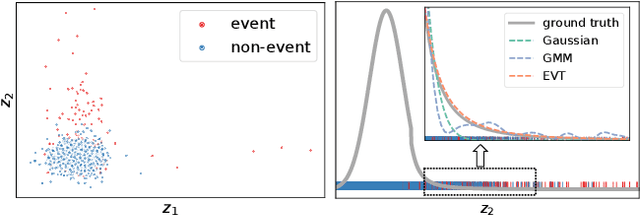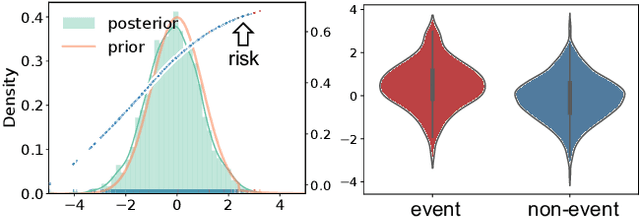Connor Davis
Flexible Triggering Kernels for Hawkes Process Modeling
Feb 03, 2022



Abstract:Recently proposed encoder-decoder structures for modeling Hawkes processes use transformer-inspired architectures, which encode the history of events via embeddings and self-attention mechanisms. These models deliver better prediction and goodness-of-fit than their RNN-based counterparts. However, they often require high computational and memory complexity requirements and sometimes fail to adequately capture the triggering function of the underlying process. So motivated, we introduce an efficient and general encoding of the historical event sequence by replacing the complex (multilayered) attention structures with triggering kernels of the observed data. Noting the similarity between the triggering kernels of a point process and the attention scores, we use a triggering kernel to replace the weights used to build history representations. Our estimate for the triggering function is equipped with a sigmoid gating mechanism that captures local-in-time triggering effects that are otherwise challenging with standard decaying-over-time kernels. Further, taking both event type representations and temporal embeddings as inputs, the model learns the underlying triggering type-time kernel parameters given pairs of event types. We present experiments on synthetic and real data sets widely used by competing models, while further including a COVID-19 dataset to illustrate a scenario where longitudinal covariates are available. Results show the proposed model outperforms existing approaches while being more efficient in terms of computational complexity and yielding interpretable results via direct application of the newly introduced kernel.
Variational Disentanglement for Rare Event Modeling
Sep 21, 2020



Abstract:Combining the increasing availability and abundance of healthcare data and the current advances in machine learning methods have created renewed opportunities to improve clinical decision support systems. However, in healthcare risk prediction applications, the proportion of cases with the condition (label) of interest is often very low relative to the available sample size. Though very prevalent in healthcare, such imbalanced classification settings are also common and challenging in many other scenarios. So motivated, we propose a variational disentanglement approach to semi-parametrically learn from rare events in heavily imbalanced classification problems. Specifically, we leverage the imposed extreme-distribution behavior on a latent space to extract information from low-prevalence events, and develop a robust prediction arm that joins the merits of the generalized additive model and isotonic neural nets. Results on synthetic studies and diverse real-world datasets, including mortality prediction on a COVID-19 cohort, demonstrate that the proposed approach outperforms existing alternatives.
 Add to Chrome
Add to Chrome Add to Firefox
Add to Firefox Add to Edge
Add to Edge